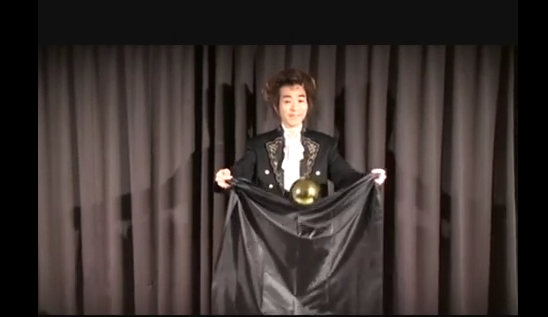I've always felt that inspecting the fukusa for koicha was like the floating "zombie ball" magic trick. In fact, I've been thinking about substituting one of those special magical cloths for a fukusa.
What do people see in the Japanese tea ceremony that makes them want us to do a demonstration on a stage?
The gestures themselves are so minuscule, mostly happening between the shoulders and waists of two people seated in a 9' square hut.
Chanoyu is not a spectator sport.
Even if eyes could penetrate the walls, nothing much happens ... water boils, steam rises, whisking inside a small bowl, a slurp, bowing. Pretty mundane.
I am of the opinion that it is the kimono that is of greater interest to those who have not seen the procedures.
Our bodies are choreographed through chado practice to accommodate the design of kimono sleeve, trying to naturally not droop our arms and elbows while our posture is erect handling the hishaku, fukusa, etc.
However overtly voluminous, there is nothing up my sleeves, to quote an oft heard phrase in magic acts, but they clearly figure prominently in the attractiveness, dare one say, the mystique, of the presentation. An amateur magician could not get away with such an outfit. S/he would be suspect immediately.
Sleeves are more receptacles for "trash" than repositories for the dieus ex machina of the "trick". That place is reserved in the breast fold of the kimono, in plane view of the guest. Holding kaishi and kobukusa in the flap of one's kimono provides easy access to these objects during the course of the temae, but is not very good magician styling.
In 1986, having been bitten only a year prior by the bug of chado, I was privileged to witness a kencha presented by then Hounsai Oiemoto, Sen Soshitsu XV, onstage at the Japan America Theatre in Los Angeles. From my vantage in the balcony, I saw this rather tall man seated in front of the daisu. While I had only once seen the set up at my sensei's tea room for hatsugama, I knew that there was very little room to remove the hibashi and hishaku from the shakutate under the top shelf. Yet, what I "saw" was the daisu stretching upward to accommodate these long handled utensils in the hand of this hardly diminutive man with long sleeved black haori. When I mentioned my experience to a more senior student, I was advised not to try to copy the oiemoto's temae. That was very good "magician" styling for sure.
The gestures themselves are so minuscule, mostly happening between the shoulders and waists of two people seated in a 9' square hut.
Chanoyu is not a spectator sport.
Even if eyes could penetrate the walls, nothing much happens ... water boils, steam rises, whisking inside a small bowl, a slurp, bowing. Pretty mundane.
I am of the opinion that it is the kimono that is of greater interest to those who have not seen the procedures.
Our bodies are choreographed through chado practice to accommodate the design of kimono sleeve, trying to naturally not droop our arms and elbows while our posture is erect handling the hishaku, fukusa, etc.
However overtly voluminous, there is nothing up my sleeves, to quote an oft heard phrase in magic acts, but they clearly figure prominently in the attractiveness, dare one say, the mystique, of the presentation. An amateur magician could not get away with such an outfit. S/he would be suspect immediately.
Sleeves are more receptacles for "trash" than repositories for the dieus ex machina of the "trick". That place is reserved in the breast fold of the kimono, in plane view of the guest. Holding kaishi and kobukusa in the flap of one's kimono provides easy access to these objects during the course of the temae, but is not very good magician styling.
In 1986, having been bitten only a year prior by the bug of chado, I was privileged to witness a kencha presented by then Hounsai Oiemoto, Sen Soshitsu XV, onstage at the Japan America Theatre in Los Angeles. From my vantage in the balcony, I saw this rather tall man seated in front of the daisu. While I had only once seen the set up at my sensei's tea room for hatsugama, I knew that there was very little room to remove the hibashi and hishaku from the shakutate under the top shelf. Yet, what I "saw" was the daisu stretching upward to accommodate these long handled utensils in the hand of this hardly diminutive man with long sleeved black haori. When I mentioned my experience to a more senior student, I was advised not to try to copy the oiemoto's temae. That was very good "magician" styling for sure.
